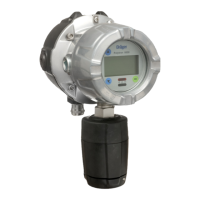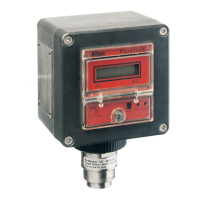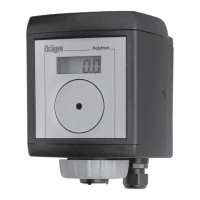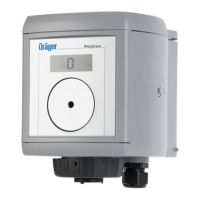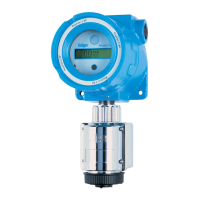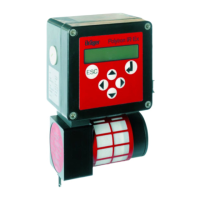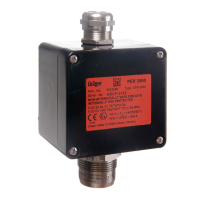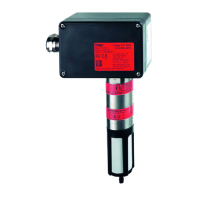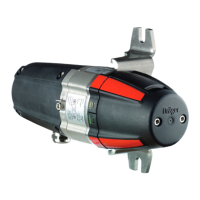Menu
Dräger Polytron 8100 19
5.7 Settings instrument
5.7.1 Alarm settings
With factory default settings and during normal operation, the
relays are energized. This provides a “fail-safe” operation.
Switching the alarm On or Off
Select Settings > Instrument > Alarm > Alarm on/off.
Select Enable or Disable and confirm.
Configuring Relay A1 or A2
This function defines whether the alarm relay is energized
during normal operation or energized at an alarm condition.
If the configuration of the relay is set to “Normally energized”,
the relay contact is asserted during normal operation and
changes if an alarm is triggered. At a loss of power this will
trigger an alarm (fail-safe). The fault relay is factory-configured
to “Normally energized” and cannot be changed.
Select Settings > Instrument > Alarm > Relay A1 or
Relay A2 and confirm.
Select Normally energ. or Energ. on alarm and confirm.
Configuring Alarm A1 or A2
Latching means that once the alarm level is reached, the
instrument will trigger the alarm. It will remain in alarm status
even if the gas concentration subsequently does not meet the
alarm condition any more. To clear a latching alarm it has to be
acknowledged with [OK].
In non-latching mode, the alarm status clears if the gas
concentration does not meet the alarm condition anymore.
Acknowledgeable means that the alarm relay can be reset
before alarm condition clears.
Non-acknowledgeable means that the alarm relay can not be
reset until the alarm condition clears.
Select Settings > Instrument > Alarm > Alarm A1 or
Alarm A2 and confirm.
The current alarm set-point is displayed.
Set the alarm set-point and confirm.
Select Next and confirm.
The current alarm direction is displayed.
Select Rising or Falling and confirm.
Select Next and confirm.
The current alarm latch mode is displayed.
Select Latching or Non Latching and confirm.
Select Next and confirm.
The current acknowledgement mode is displayed.
Select Acknowledgeable or NonAcknowledgeabl or
PreAcknowledgeabl and confirm.
Select Next and confirm.
The current hysteresis is displayed.
Set the hysteresis and confirm.
Select Next and confirm.
A confirmation screen shows all settings.
Select Confirm and confirm with [OK].
The new settings are now saved.
Repeat settings for A1 and A2.
CAUTION
This function is only available if the relay module is
installed.
CAUTION
If the alarm is set to Off, an alarm condition will not be
shown by the LEDs or assert the relay!
NOTICE
The maintenance signal is transmitted and the symbol
[ ] is displayed.
NOTICE
The hysteresis function defines an interval where a
triggered relay maintains its status until the gas
concentration is outside the defined interval. This
prevents relays from chattering at an alarm set-point.
Example: A2 at 40 % LEL Methane
Hysteresis: 3 % LEL
Alarm asserts at 40 % LEL
Alarm de-asserts at
<37%LEL(=40%LEL-3%LEL)
i
i
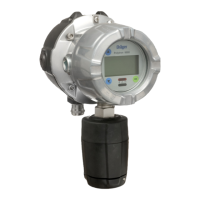
